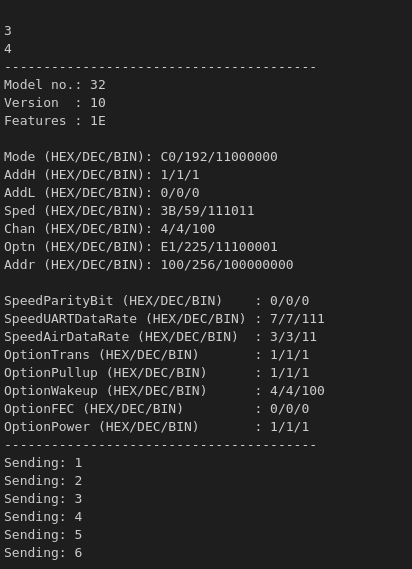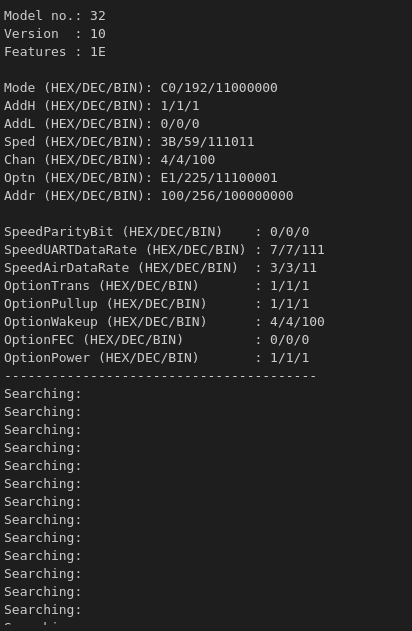Unplug the 1 watt units from your teensy immediately. These units can easily consume more power that the onboard regulator can supply. I've burned up some NANO's forgetting about power consumptions. I'm surprised the regulator survived this long.
These units really don't like 5v0 power supply. 3v3 is their recommend input voltage. I hope the voltage / heat issue did not damage the EBYTES
Do you have the antennas connected? The settings look like they match on both units. These should send/receive.







Hi Kris, firstly thanks for making this library! I'm having some problems with receiving data packets.
I'm using the E32 433T30D 1W module and a Teensy 4.0 with the transmitter and Teensy 3.2 with the receiver. I tried powering the transmitter E32 with a Panasonic NCR18650PF 3c 2900mAh Li-Ion battery, but the E32 was got extremely hot, so I'm currently powering both with the onboard teensy vregs.
This is the Transmitter code:-
This is the receiver's code:
Here's all the transmitter's parameters:
The receiver's parameters:
As you can see in the screenshots above, the transmitter has successfully sent data packets yet the receiver is still searching. Could you help me with this?
Thanks, moonman